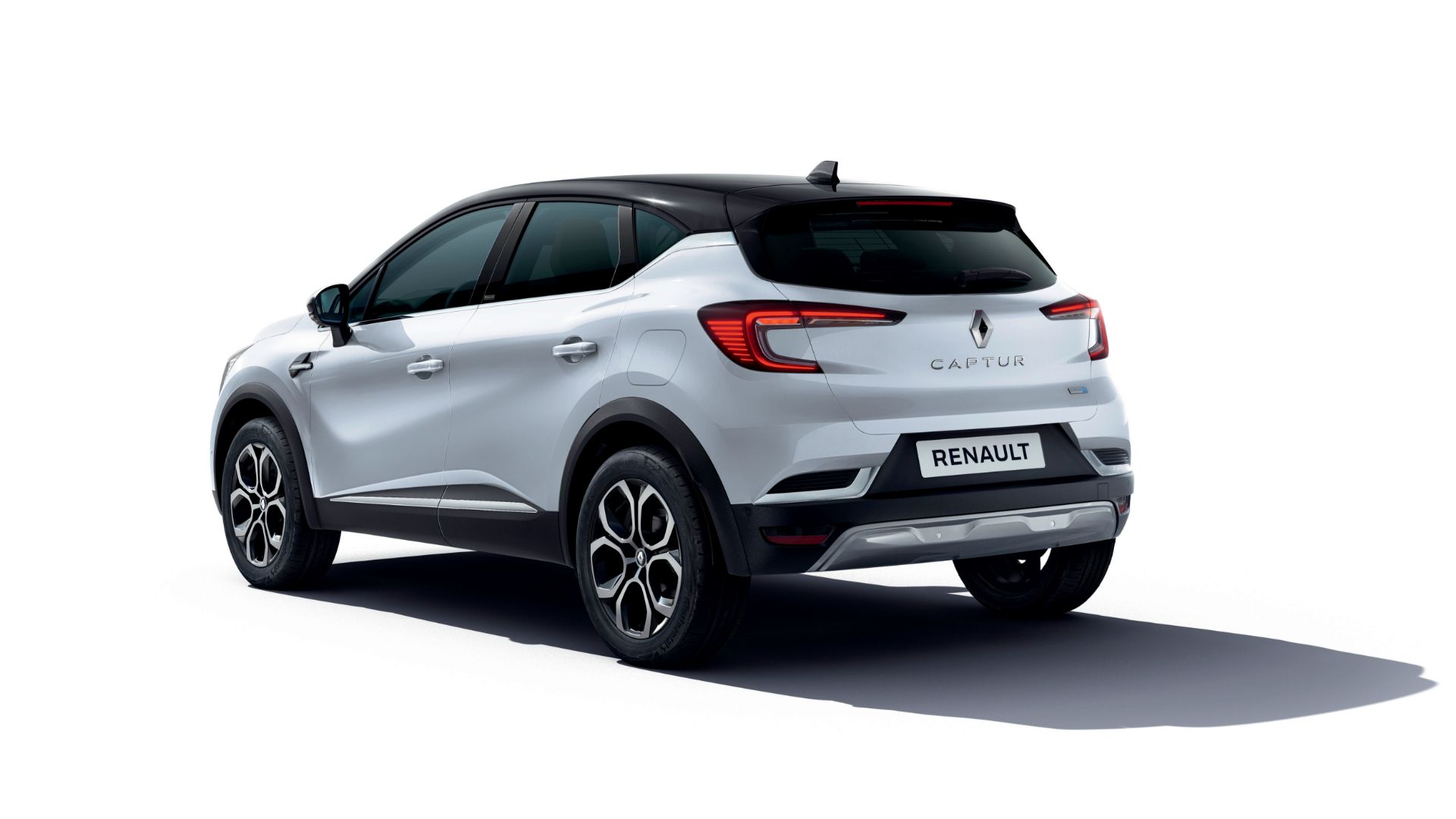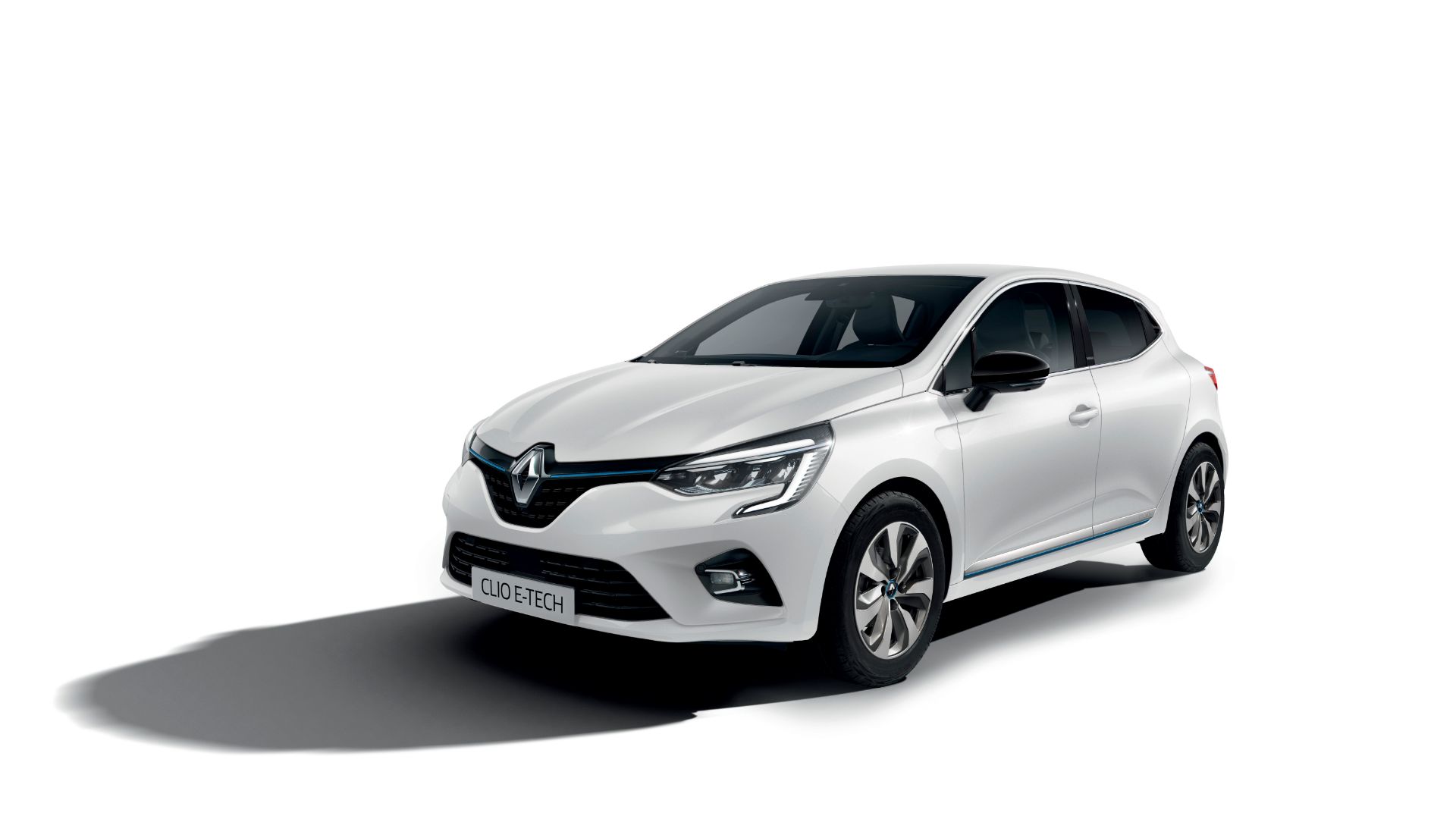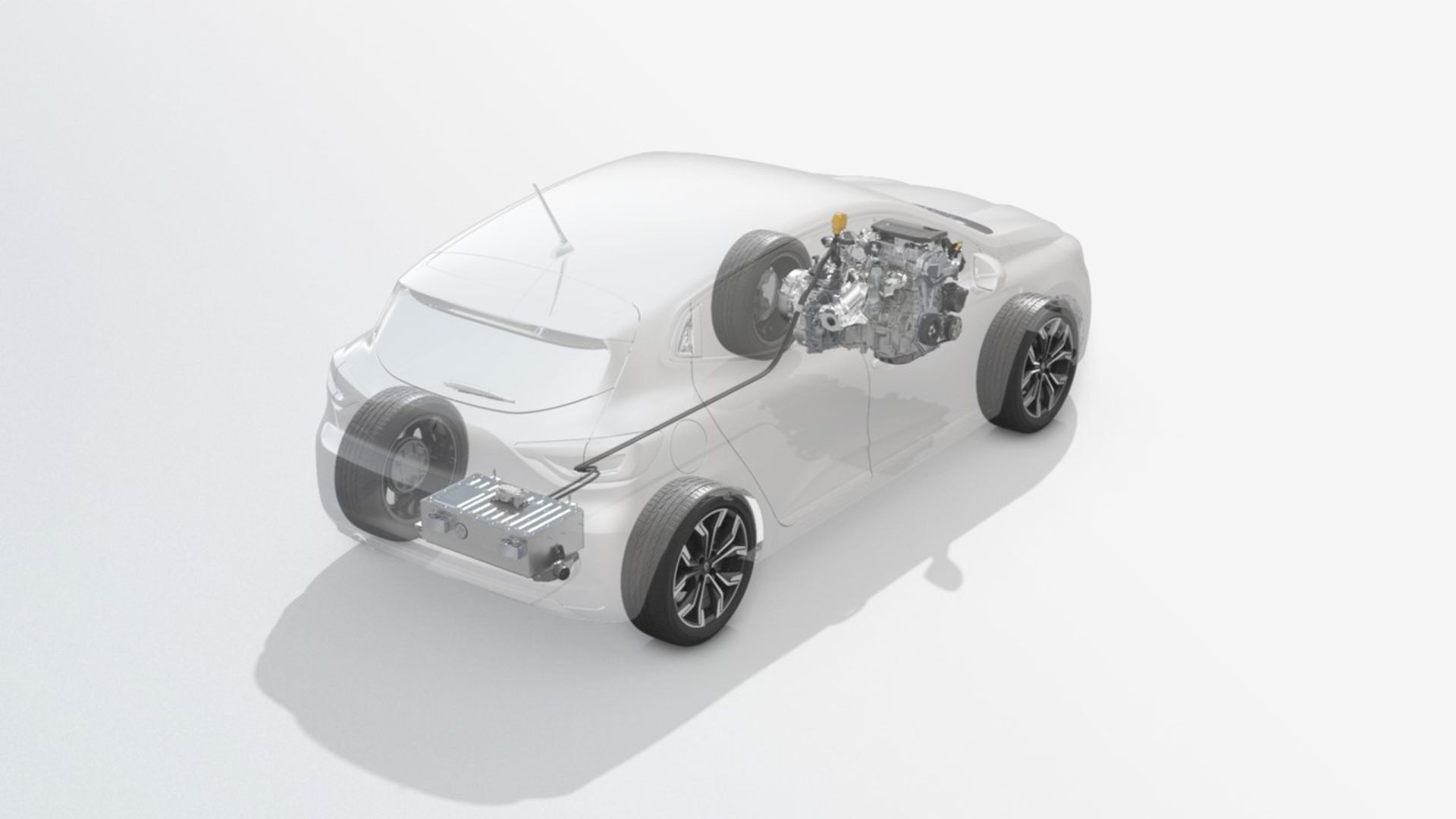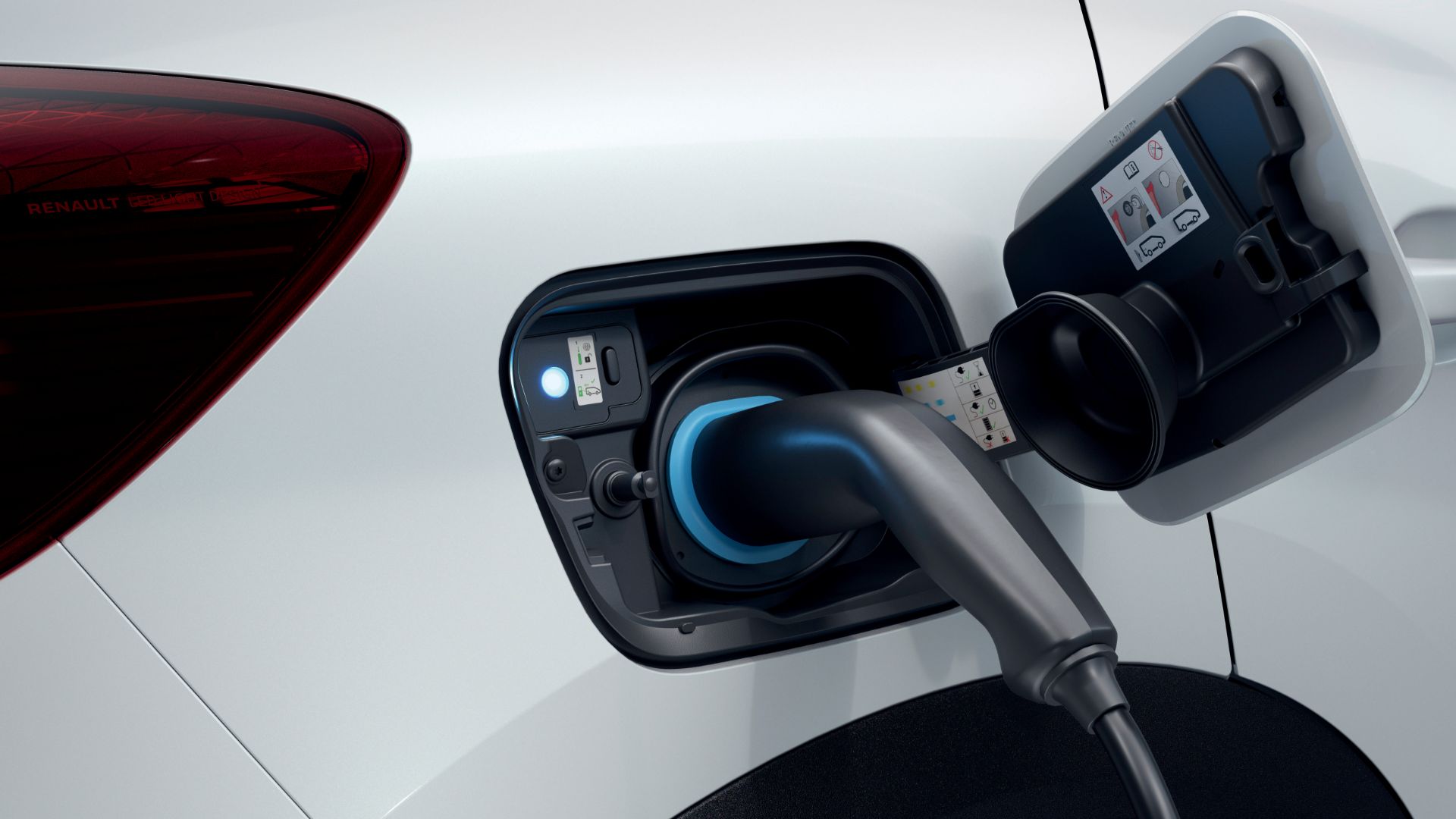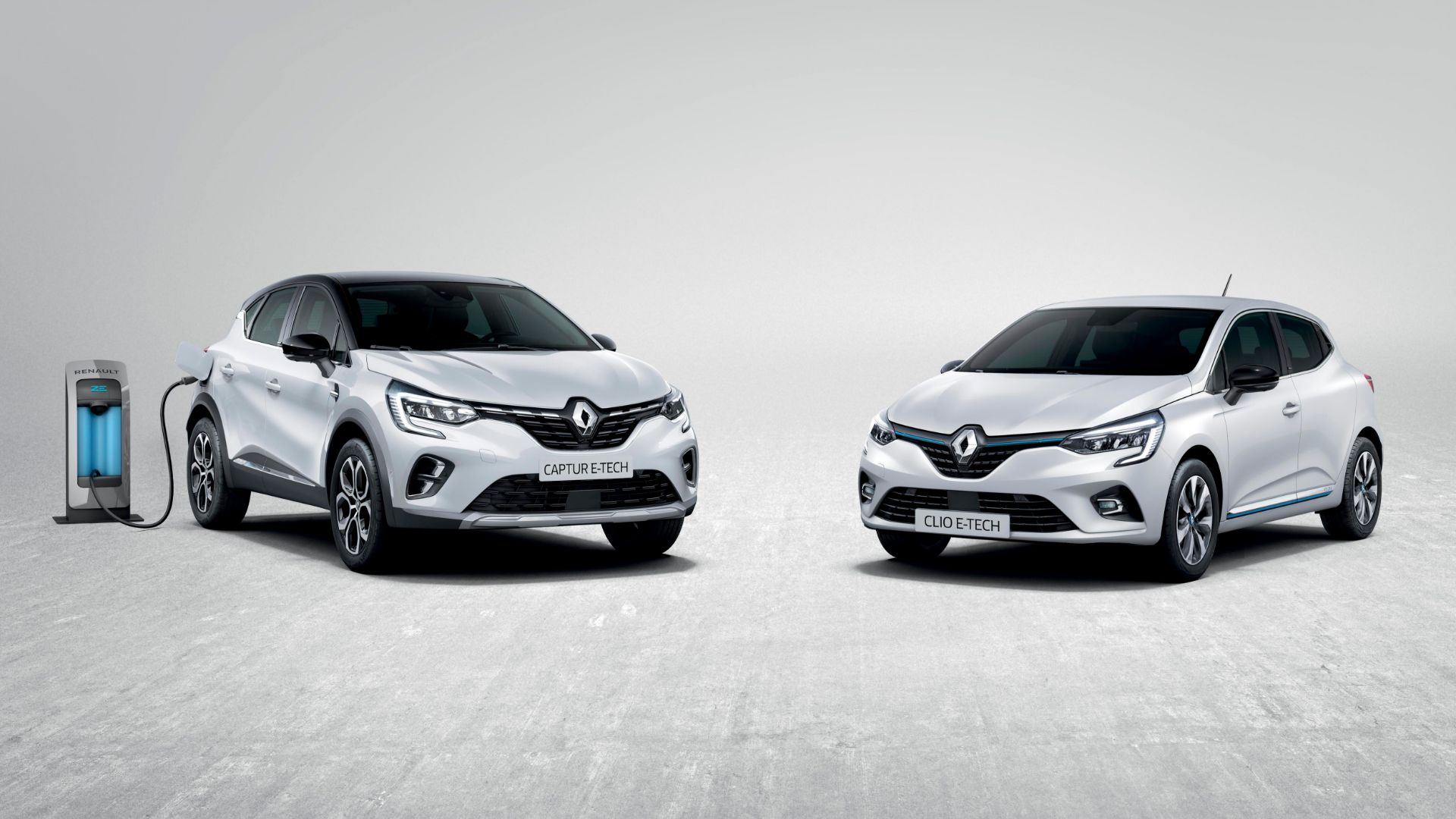
Renault has unveiled a pair of new hybrids at the 2020 Brussels Motor Show. Meet the Clio and Captur E-Tech. Still want that Zoe?
With the arrival of the E-Tech derivatives, two of Renault’s best-selling cars now have the option of being electrified. An E-Tech variant of the Megane will follow soon.
E-Tech efficiency, emissions and range
The Clio and Captur E-Tech both use a 1.6-litre naturally aspirated petrol engine, in combination with two electric motors. In the Captur, the battery is 9.8kWh with plug-in capability. The Clio can’t be plugged in, and has a 1.2kWh battery.
This allows the Captur an electric driving range of 30 miles (final WLTP certification pending) plus an electric-only top speed of 85mph. The plug-in crossover should be good for 188mpg and emit 34 g/km of CO2, although this requires ‘optimised usage of the 100 percent mode’.
Exact figures for the Clio have yet to be released What we do know is that, impressively, the E-Tech hybrid weighs just 10kg more than a Clio dCi 115 diesel. Renault says it should yield ‘significant reductions in fuel use and CO2 emissions, for up to 80 percent of urban driving time in 100 percent electric mode’.
The Clio is still very much urban-oriented, with a top speed in electric-only mode of just 38mph. A fuel saving of 40 percent in comparison with conventional cars is estimated.
Renault E-Tech: from F1 to the road
Renault says it has put Formula 1 learnings to use in developing the E-Tech platform. Specifically, the new clutch-less transmission is directly influenced by F1 efforts. It allows for a pure electric start, plus a reduced gap in acceleration during gear changes.
Various levels of battery regeneration can be selected, but the electric motor will always recover power when coasting. When braking, the car operates regen first, with the pads and discs only coming in to assist. ‘Brake’ mode allows for one-pedal driving, similar to the Zoe.
E-Tech driving modes: Pure to Sport
A new Pure driving mode in the Captur allows for all-electric driving. In Sport mode, a full press of the accelerator kicks both the electric motor and the petrol engine into action, for a combined acceleration effort.
E-Save is another new mode, which conserves power, and allows the petrol engine to charge the battery. A minimum of 40 percent is always kept in reserve.
The series-parallel architecture means the cars can run in various states of hybridisation. Fifteen operating combinations are available and switched between automatically, depending on power requirements and battery charge state.
Renault’s electric dreams
Adding hybrid power to the Clio might seem like a sideways step for Renault, given it has offered the similarly-sized Zoe for some time. However, its plan is wholesale electrification, in one form or another. By 2022, Groupe Renault wants eight fully electric models, and 12 electrified (hybrid) models in its line-up.
ALSO READ
Revealed: the cars you viewed online in 2019
The 25 greatest go-faster stripes
Morgan Plus 4 70th Anniversary Edition marks the end of an era
